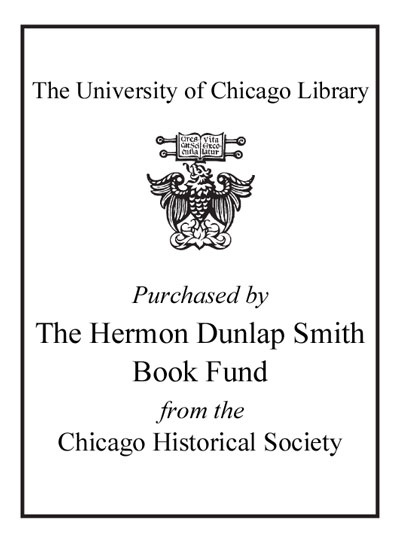| Summary: | Jesse Olsavsky's The Most Absolute Abolition tells the dramatic story of how vigilance committees organized the Underground Railroad and revolutionized the abolitionist movement. They defended Black neighborhoods from slave catchers, helped thousands of refugees to freedom, and cultivated a movement of ideas animated by an assortment of agitators, intellectuals, and formerly enslaved runaways. Exchanges between fugitives and abolitionists further radicalized the latter's tactics, transforming abolitionism into a revolutionary movement at the heart of the crises that culminated in the Civil War--back cover.
"In the decades leading up to the American Civil War, no antislavery organizations proved more creative or radical than vigilance committees. Based largely in northeastern cities, these abolitionist groups were devoted to protecting Black neighborhoods from police and slave catchers and to helping runaway slaves in all their struggles. In public, these committees agitated with and on behalf of fugitives, while secretly, they assisted as many as ten thousand to escape slavery. While most vigilance committee activists were Black, female, or working-class, many of the best-known abolitionists, intellectuals, and fugitive radicals of the day--such as William Lloyd Garrison, Frederick Douglass, Harriet Tubman, and Henry David Thoreau--also worked for the committees or welcomed their assistance. Jesse Joseph Olsavsky's "Fire and Sword" is the first comprehensive scholarly analysis of the committee movement--its people, its national and international networks, its methods of resistance, as well as the ways it shaped the intellectual and political life of antebellum abolitionism. Olsavsky shows that the groups provided a unique space for activists of differing backgrounds to converge and learn from the experience of thousands of runaways who had first-hand knowledge and deepest hatred of the institution they all fought to overthrow. Indeed, by learning from fugitives and bringing them into the movement, vigilance committees revolutionized abolitionism by transforming the movement's tactics in ways that helped organize what became known as the "Underground Railroad." Committee members were thinkers and doers, who crafted unconventional ideas, critical of all aspects of their society, from prisons to patriarchy. They helped to exacerbate sectional conflicts over the fugitive slave laws, theorized abolitionism as a revolutionary movement, and played a pivotal role in planning John Brown's Raid, one of the immediate causes of southern secession. Scholars have long ignored abolitionist vigilance committees, seeing them as small, disorganized, or marginal to the supposedly white-led movement to abolish slavery. Olsavsky's study shows the ways vigilance committees organized the Underground Railroad and how they shaped abolitionism and the sectional crisis. By examining local vigilance committees across the U.S., as well as their transregional networks of supporters--from the South to Canada, from Haiti to Britain--he shows that they achieved so much by providing the primary space of contact, cooperation, and learning between abolitionists and thousands of runaways, who knew how slavery worked and how best to resist it. Listening to runaways while recruiting them into the public movement, the committees convinced many in the broader abolitionist movement that assisting slaves to emancipate themselves by any means had to be a foundational abolitionist tactic. More than that, the committees extended abolitionist participation beyond the middle class, mobilizing sailors, dock workers, market women, and slaves, whose labors proved necessary for helping slaves escape by sea and land. Above all, Olsavsky reveals clearly how, through militant, illegal work, vigilance committees stood at the center of the crisis over slavery, which reached its crescendo in the 1850s. His work is sure to attract a broad audience of scholars interested in slavery, abolitionism, and the causes of the American Civil War"--
|
|---|

